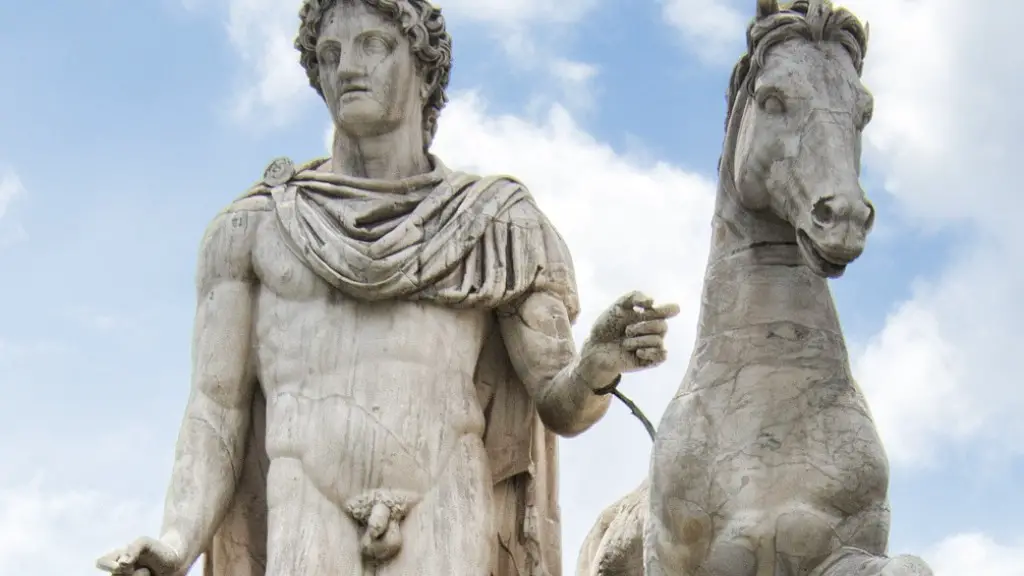Slaves in ancient Rome lived all over. They were the backbone of the Roman Empire. For over 500 years, slaves provided labor to households, businesses, farms, and worked in Rome’s bustling markets. They made up a huge chunk of Rome’s population, doing all sorts of jobs, from snubbing in mines to washing dishes in villas. It is estimated that by the 1st century BC, up to 40% of the Roman population consisted of slaves.
Slaves in ancient Rome typically lived in cramped quarters, often mere rooms in larger residential buildings with minimal privacy. However, some were lucky enough to live in households. These people were better taken care of, as their living conditions were often on par with that of their masters. Ancient historians such as Pliny the Elder and Terence even talk about how young slaves in these households could be educated, sometimes even learning to read and write Greek.
Some slaves in ancient Rome was given the permission to own some of their own property, whether their masters granted it or their slaves bought it themselves. These possessions may have even included clothing and jewelry. Worked hard and played by their masters’ rules, these slaves were seen as reliable and could be trusted by their owners.
Slaves could work in the mines, build monuments and temples, sew, spin and weave fabrics and provide medical treatment. They largely served as laborers and house workers, as well as being in charge of running basic errands for their masters. It is no wonder that some slaves even commanded greater respect than their masters, and this allowed them to set their own prices for their services.
Slaves did not have the same rights as their owners, however. Punishing slaves was often harsh, and those caught trying to escape were often severely punished. Slaves could also potentially be sold by their masters to another owner, separating families, and even children could be sold. These harsh punishments helped ensure that the number of slaves in Rome stayed relatively steady over five centuries.
Types of Slaves
In ancient Rome, there were three general types of slaves: those owned by the Roman state, those purchased by private individuals, and those born into slavery. Those owned by the state, called the public slaves, were used to run the state institutions, manage public lands, build public buildings, and serve as auxiliaries in the Roman army. Private slaves, on the other hand, were owned by a single individual, often as part of their household. These slaves could also be loaned out for a specific task or kept for lifelong servitude, depending on the master’s wishes. Slave children born into slavery were often kept as property of their parents’ owner.
Although slavery was seen as a necessary part of life in ancient Rome, there were numerous legislative restrictions regulating the treatment of slaves. Laws such as those of lex Fufia Canina prevented the abuse of slaves. The law also granted slaves the right to shelter, food, clothing, and protection from violence. Some other laws, such as the Lex Aelia Sentia, allowed slaves to earn money, purchase their own freedom, and even become citizens.
Religion
Slaves in ancient Rome, despite being restricted in many other aspects of life, were still able to express their religion. Most slaves were polytheistic, worshiping many gods and goddesses, with popular choices being Zeus, the sun god Apollo, and the goddess Cybele. Others, still, may have followed the Hannibalic religion, with many choosing to become eunuchs. As well, slaves in the household could be given their own rituals to follow, depending on their masters’ beliefs.
While slaves could practice their beliefs, the traditional Roman values were still maintained among them. These values were seen as necessary for the proper functioning of Rome, and were instilled in both children and slaves from a young age. It was a combination of traditional Roman religious beliefs and the religion of their ancestors that ultimately formed the unique religion of Rome’s slaves.
Forced Labour
Forced labor was a norm in ancient Rome and slaves were expected to perform the works required without complaint. Slaves built the great monuments and cities of Rome, such as the Forum, the Colosseum, and the Pantheon. They worked in factories building ships, weapons, and other important objects and they manufactured clothing, pottery and jewelry. Slaves also worked on large farms, producing the food necessary to feed the population.
Slaves that worked on large estates were often poorly treated by their owners. They worked long hours each day, often in harsh conditions, and some were even punished severely if they failed to complete any task they were asked to do. Slaves living on these big farms did not often have the same rights as their freer counterparts in the cities, but a few had the privilege to own their own land.
Modern Comparisons
The majority of the population in modern-day Rome is comprised of immigrants and their descendants, many of whom can trace their ancestry back to the ancient Roman slaves. Although there are few records of modern-day slaves, the fate of ancient Rome’s slaves can offer some insight into the current status of their descendants.
Although modern-day Rome is a far cry from the ancient city, the legacy of its past still lives on in the lives of its citizens. The living conditions of modern-day slaves are often similar to those of their ancient counterparts, and the harsh punishments they face if they try to escape have not changed much. In comparison to their ancient counterparts, modern-day slaves have a few more rights in terms of earning wages, owning property, and even setting their own prices for their services.
Emancipation of Slaves
Although slavery in ancient Rome persevered for centuries, it eventually came to an end. Emancipation of slaves was swift and it occurred in two stages. The first came in the form of edicts issued by rulers throughout the Roman Empire during the late Republic, when Julius Caesar emancipated all members of the Praetorian Guard. The second stage of emancipation was even more far-reaching, and took place in the wake of Emperor Constantine’s conversion to Christianity. This conversion meant that all slaves were granted freedom, regardless of their social or economic standing.
Although emancipation of slaves in Rome happened in quick succession, it did not result in sudden equality between the freed former slaves and the free-born citizens. Too much of the Roman legacy remained in the laws and customs of free-born citizens, and slaves’ newly-gained freedom had its own challenges, such as finding work and adapting to city life.
Legacy of Slaves
The legacy of ancient Rome’s slaves lives on through their descendants. This legacy can be seen in the vibrant cultures of Rome’s present-day population, as well as in the unique customs of the people. Roman culture features in everything from art and cuisine to music and customs, and all of these are influenced by the legacy of ancient slave life.
Modern-day Rome is also home to a number of organizations devoted to the remembrance and celebration of ancient slave life. These organizations aim to recognize the challenges slaves faced and to promote the emancipation of slaves in other countries throughout the world. This legacy of ancient slaves should not be forgotten and should continue to inspire those living in modern-day Rome.
Conditions of Slave Families
Slaves in ancient Rome often lived in households with their families, consisting of parents, siblings, and other relatives. Ancient Roman law dictated that slaves had to support and care for their families, even if they were separated from them. They took multiple jobs to make sure that their families had enough food and clothing and had access to medical treatment.
Slave families in Rome also had rights that protected them from being mistreated. These rights included the right to marry and raise children, the right to own property, the right to file a legal complaint, and the right to pursue an education. These privileges granted to slave families in Rome, although limited, allowed them to keep some semblance of normalcy in their day-to-day lives.
Reasons for Slavery
The introduction of slavery in Rome was driven by a combination of factors. Population and military shortages in conquested areas, as well as the availability of a large supply of slaves from conquered people and distant lands, were some of the main causes. Furthermore, slaves were thought to be cheaper and more productive than free workers, and allowed for more capital to be invested into Rome’s other pursuits.
Slavery was also a political tool for controlling conquered populations. Slaves could be used to keep order and enforce the Roman way of life and law. Slaves were also regularly used to construct public works such as monuments, temples, and roads. This was thought to be necessary for keeping citizen morale up and ensuring loyalty.
Slave trade in Rome, then as now, was controversial. Slaves often hated their masters and mistreatment of slaves was common. Nonetheless, slavery was an essential part of the Roman social structure and served an important role in the history and development of the Roman Empire.


